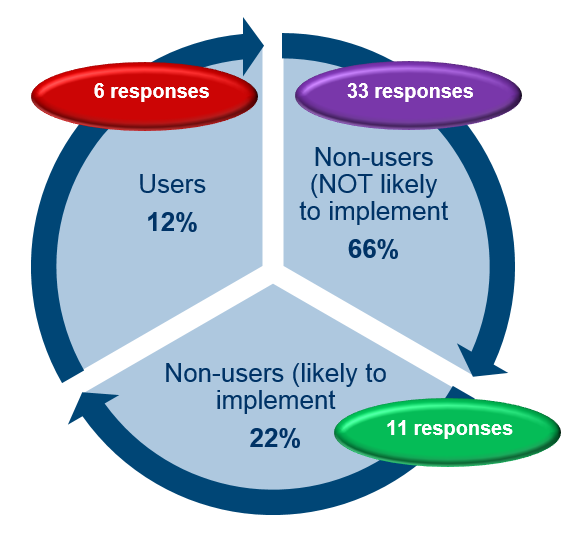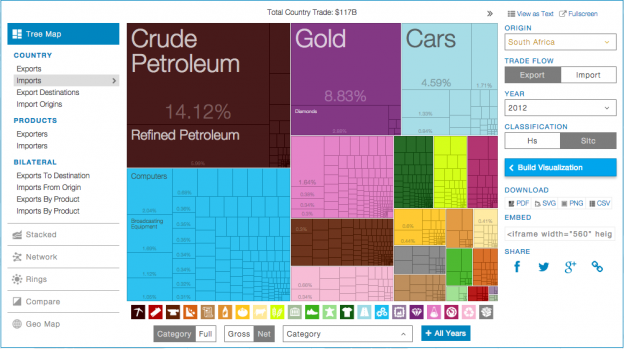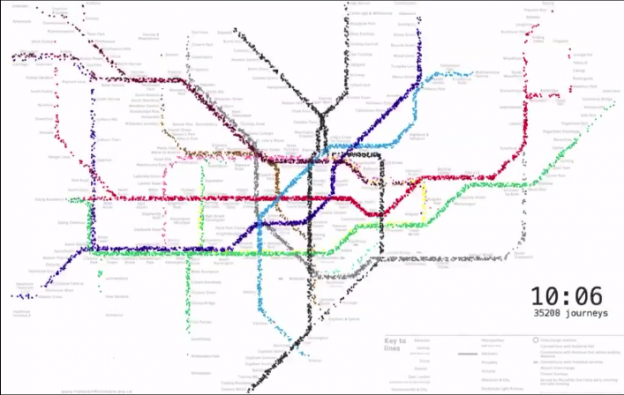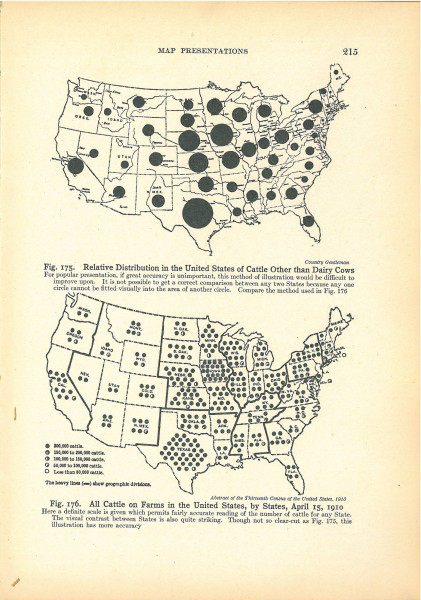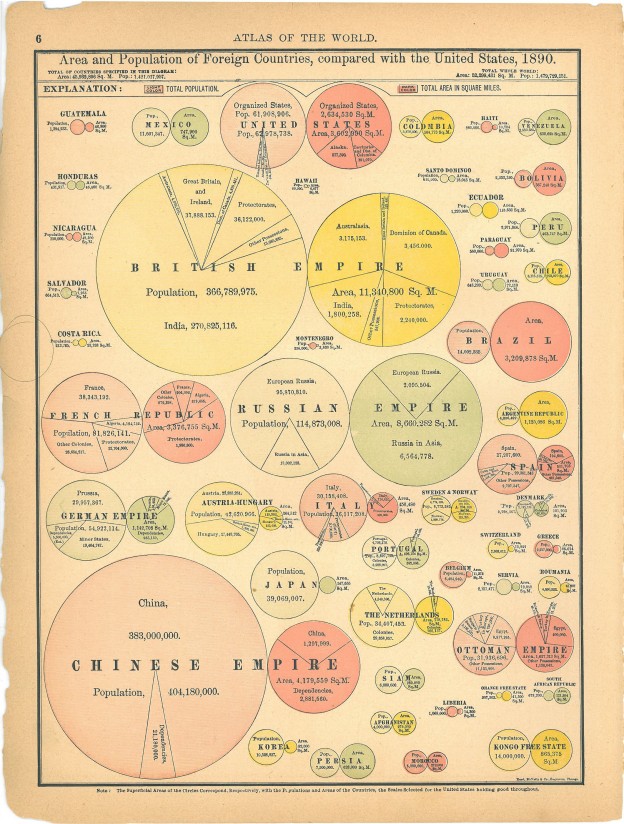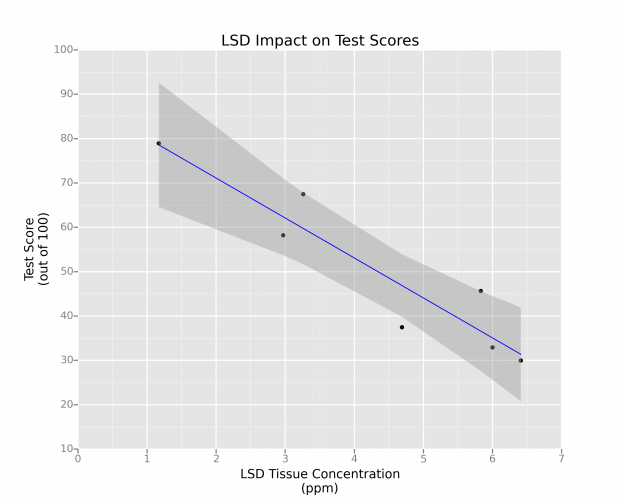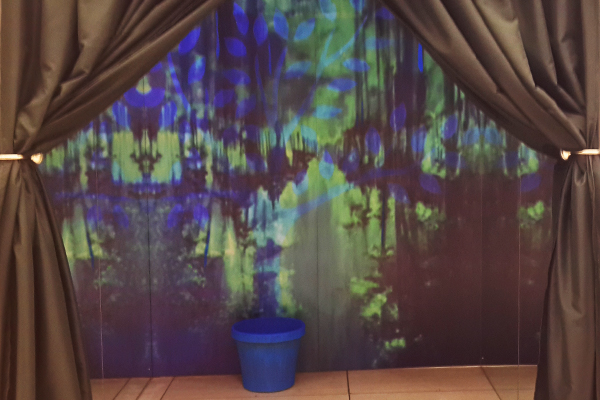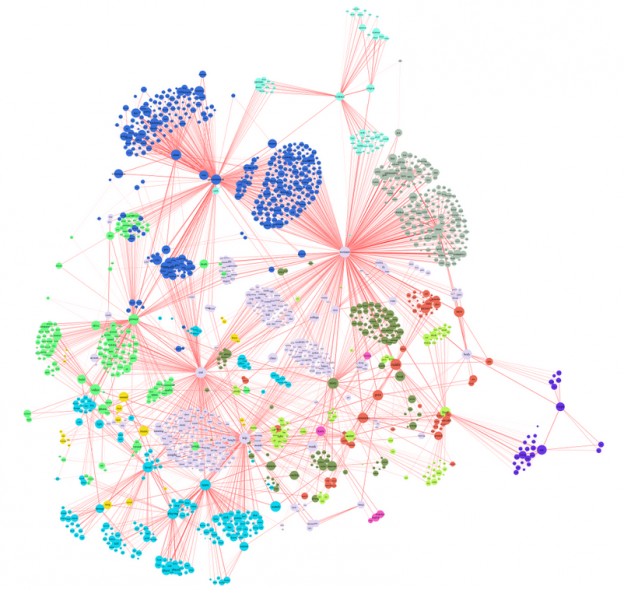Pie charts are often maligned by the data viz community. Sometimes for good reason and sometimes to just to feel better by ridiculing those that don’t know you are not supposed to use pie charts. However there are those moments where something goes truly wrong. This has to be shared to prevent it happening again. Lets this act as a warning as to what can go wrong when you use PowerPoint without a licence. Continue reading “A really bad pie chart”
Category: General
Visualising South Africa’s Imports and Exports
This is a great use of a tree map to show the breakdown of imports vs exports for South Africa. The last data point is 2012, but its still interesting to see. In 2012 we exported $20.4 billion and imported $10.3 billion worth of gold. Surely we could have just kept it half of it here and saved everyone a lot of time? Continue reading “Visualising South Africa’s Imports and Exports”
Visualising the London Underground
This is a great way to look at the total number of travellers on the London Underground on an average day. The audio that goes with it is very nice too! The one thing I would have liked to have seen would be the station entry/exit numbers to get a sense of the extent of an average journey. The data is here if you want to fiddle. Continue reading “Visualising the London Underground”
Data Visualisation Pioneers
There is quite a deep history of Visual SenseMaking and it seems a lot of the work in advancing and documenting data visualisation was done by engineers. Fine people engineers. This article gives an interesting review of some of the unsung pioneers of the discipline and small diversion about Isotypes. Continue reading “Data Visualisation Pioneers”
Really, REALLY Old Data Visualisations
I know it seems preposterous, but data visualistion predates the the computer. Its true! There were the pioneering people who used pen and paper and had enough free fingers to do the necessary calculations since they weren’t holding onto phones. No PowerBi or Tableau in sight. It was a better time. Things took longer but there was no Neflix, so people had more time to spare. Continue reading “Really, REALLY Old Data Visualisations”
7 Graphs for 7 (unlikely) Datasets
Sometimes when you are experimenting with a new data visualisation tool or some new library in R, you need a data set to use. R’s mtcars is not that interesting and frankly overused. Continue reading “7 Graphs for 7 (unlikely) Datasets”
Piano Tab
As an amateur bassist, I have taken the road frequently traveled of being able to read tab and totally intending to learn to read musical staff notation at some point. Learning piano represents a bigger hurdle though, as you need to be able to read music notation to play something that has been written done. Continue reading “Piano Tab”
Microsoft’s Big Data Art Exhibition
Microsoft have an art exhibit at Sandton City at the moment, running until 3 July, to try make big data more interesting without actually using any data. Like many art exhibits, its head scratchy stuff (or beard-strokey, if you have one) and you really have to stretch quite hard to see the relevance. In the context of what they were doing, I am disappointed in the execution of the art itself. While the exhibit is about Big Data and the art pieces have explanations relating to Big Data, it does not mean that they works automatically convey anything meaningful about the topic. Remember, coloration does not equal causation. Continue reading “Microsoft’s Big Data Art Exhibition”
Pie Chart Nazis
One of the things that data visualisation people like to do is point out how bad pie charts are. Its the first thing you do to show off your data viz chops. The example below from Apple being the prime candidate of a misleading pie chart. Continue reading “Pie Chart Nazis”
The Reddit Universe
This picture of what interests reddit has been doing the rounds recently. Its a fairly large network graph showing the links between the different areas of interest of reddit users. The detail of the article is interesting on its own, but what this highlights for me is the difficulty with using large network graphs to convey information graphically. Since you have to keep zooming and moving around, you keep adding new location and context information to working memory fairly frequently, and something will fall out. Like when Homer Simpson’s took a wine making course. Continue reading “The Reddit Universe”

